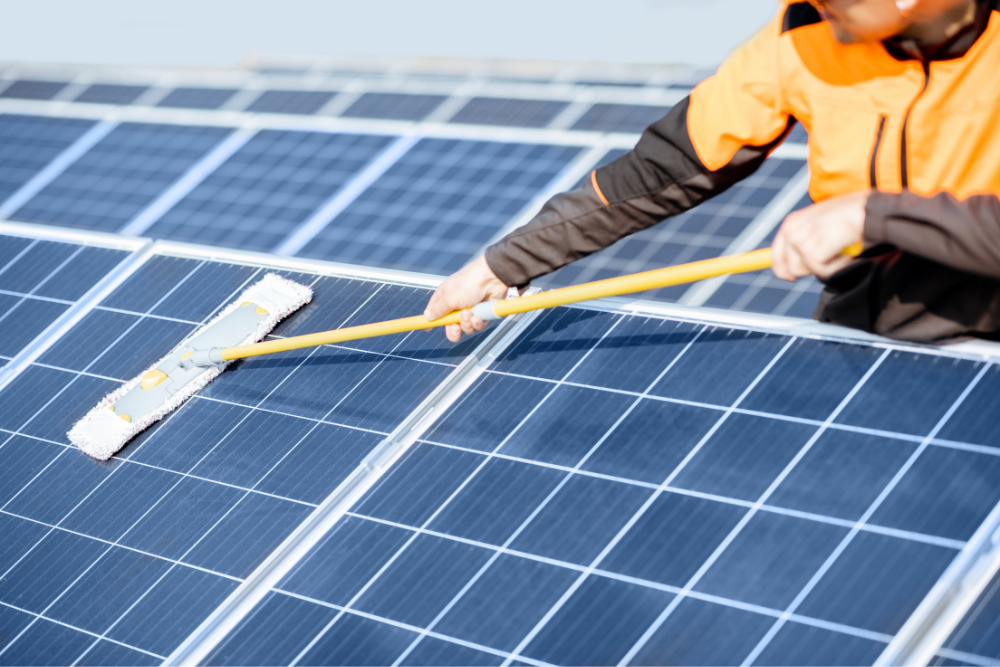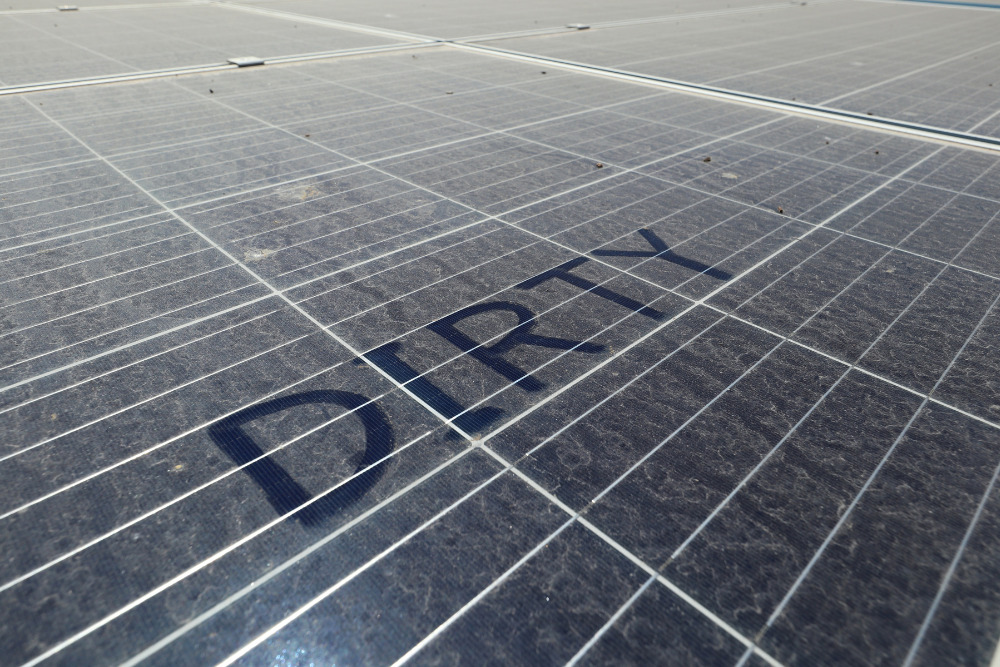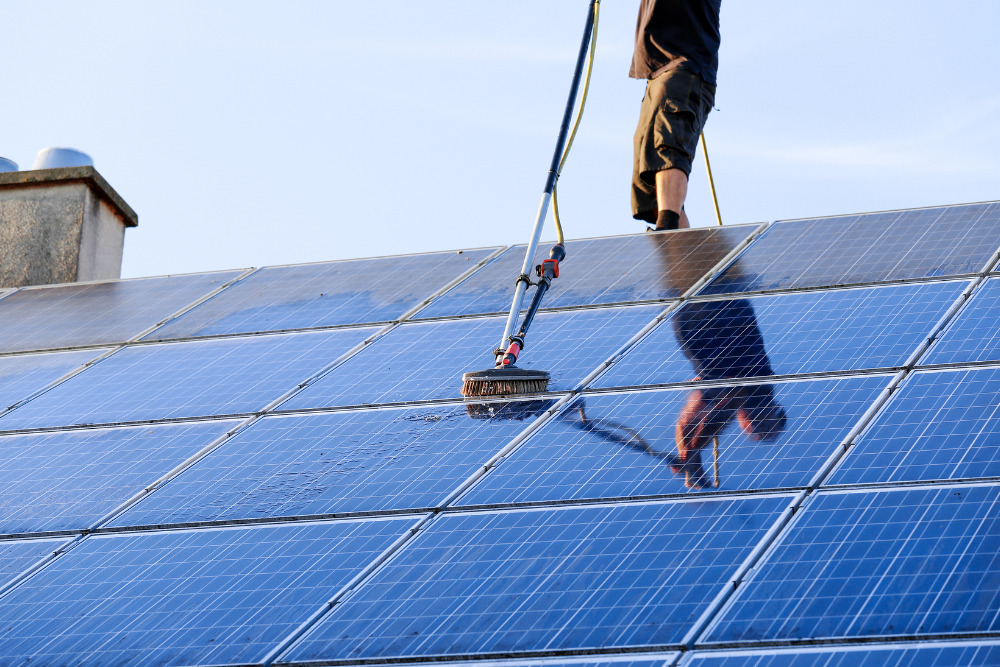
Regular maintenance extends the lifespan of your solar panels and identifies and fixes any issues that could be affecting panel performance.
Solar panel maintenance should be done once or twice a year unless you live in an area with high pollution levels. You can inspect the panels visually to check if they need cleaning. You will notice droppings and other debris that you can clean with a soft brush, sponge, biodegradable soap, and cold water. If you are unable to safely access your panels, hire a professional solar cleaning service company for the task.
Do Solar Panels Need Regular Maintenance?
Solar systems are tilted and don’t have moving parts, so they are low maintenance. However, debris buildup can reduce your solar panel system’s energy output or cause it to malfunction. Some installers and solar panel manufacturers will void your solar panel warranty if a regular maintenance schedule isn’t followed.
A good rule of thumb is to check periodically for debris (one to two times a year) and clean accordingly. If you live in an area with high smog levels, a desert climate, or near a construction site, airport, or factory, you may need to up the maintenance due to the pollution’s effect on the panels.
How To Know If Your Solar Panels Need To Be Cleaned
Monitoring your energy production and visual inspections are the two main indicators that the panels need to be cleaned. If you have a monitoring system, use it to track the power output and the overall solar panel performance in real-time. Without monitoring, you can still keep track by checking your energy bills.
A visual inspection simply means checking for bird droppings or any accumulated dirt, dust, leaves, or water stains.
DIY Solar Panel Maintenance Tips

Here are 7 do-it-yourself solar power system maintenance tips:
- Keep trees trimmed. This boosts your solar panel efficiency twofold: overhanging branches block the sun’s rays, and leaves that accumulate on the panels reduce their efficiency. Overhanging branches are also more likely to fall and physically damage the panels.
- Ensure you have the necessary supplies for inspection and cleaning. An inspection typically doesn’t require many supplies — you likely already have them if you are used to fixing stuff or doing projects in your home. For climbing, you’ll need a ladder, gloves, and non-slip shoes. Cleaning supplies include a soft bristle brush, brook or leaf blower, garden hose, bucket, squeegee, and biodegradable soap.
- Remove debris. Besides animal droppings and leaves, keep an eye out for tree sap, pollen, seeds, dead insects (or their nests), and even roofing materials if you’re doing renovations close to the panels.
- Use cold water and soft cleaning materials only. Cleaning solar panels with hot water or using abrasive materials damages the panels and can void the warranty.
- Do maintenance during the spring and fall. It is the best time of year simply because the solar energy system will become too hot to touch in the summertime. Clean the panels in the early morning or evening for the same reason.
- Check your inverters. They should always have green lights on. If you notice the lights aren’t green, you can follow the steps in your manual for troubleshooting or call your solar company for help.
- Prioritize your safety. If you cannot safely access your solar panels or if you have physical limitations, make sure to hire a professional instead of doing it yourself.

Step-By-Step Instructions For Inspecting & Cleaning Your Solar Panels
You can inspect and clean your solar panel system in five steps:
- Always shut the system off first.
- Examine your rooftop or ground-mounted panels to check for debris. During the inspection, make sure to look for physical damage as well.
- Use a soft broom or brush to remove dirt from top to bottom of each panel. Sweep gently — do not press the panels.
- After brushing, use a garden hose, a biodegradable soap, and a soft sponge to clean the panels.
- Turn the system back on and monitor performance to ensure no damage was done during cleaning.
If you’ve customized the appearance of your solar system by adding SolarSkin overlays, consult your manufacturer or installer for cleaning tips to ensure you don’t damage the overlays.
How Often Should A Professional Inspect Your Solar Panels?
The first inspection should be done by your solar panel installer 1-2 weeks after installation. After that, you can schedule annual inspections, but most solar companies recommend homeowners hire a professional every 2-5 years to maintain the panels’ efficiency as well and extend their lifespan.


